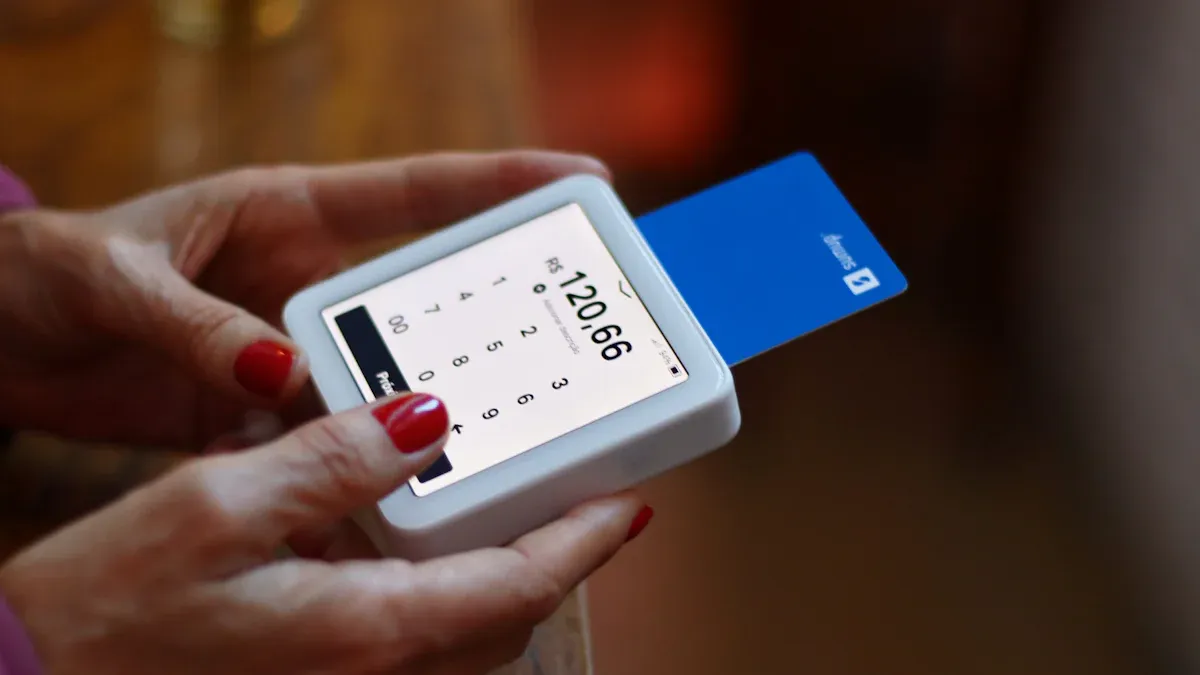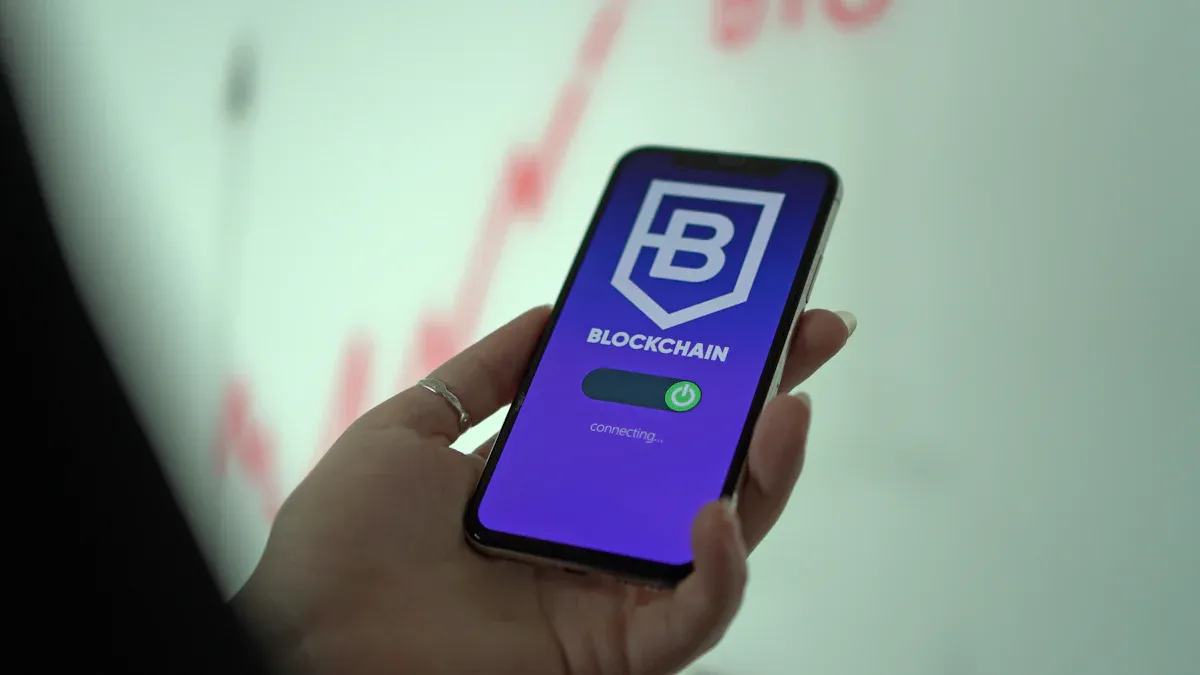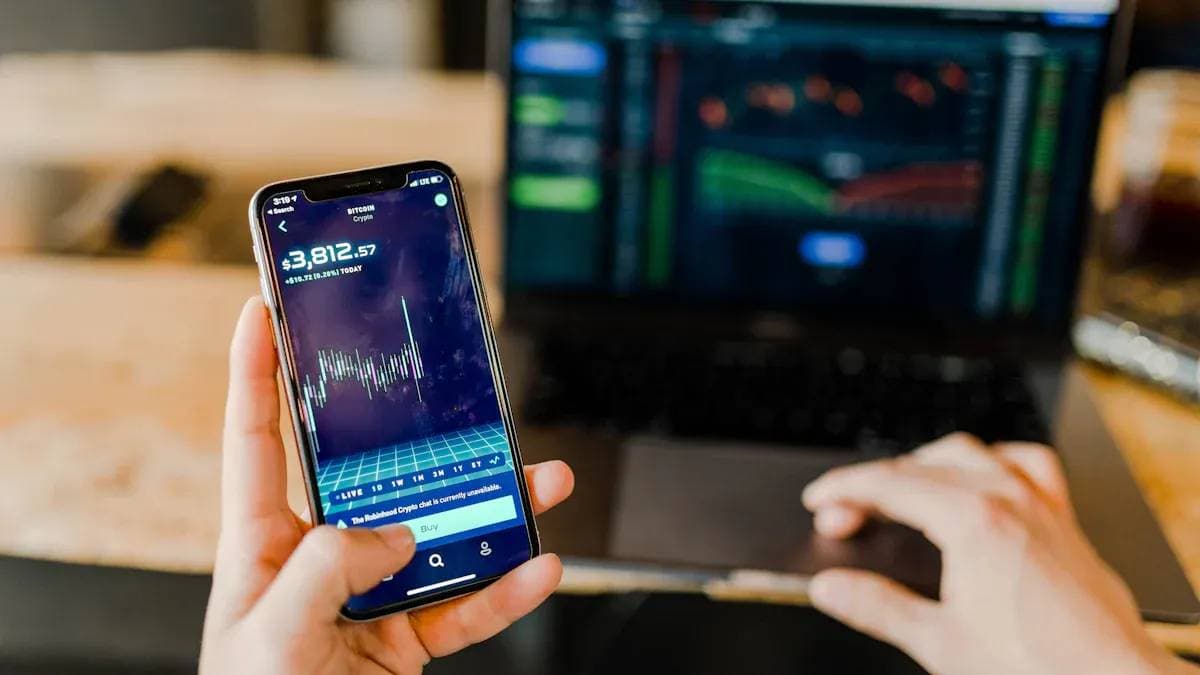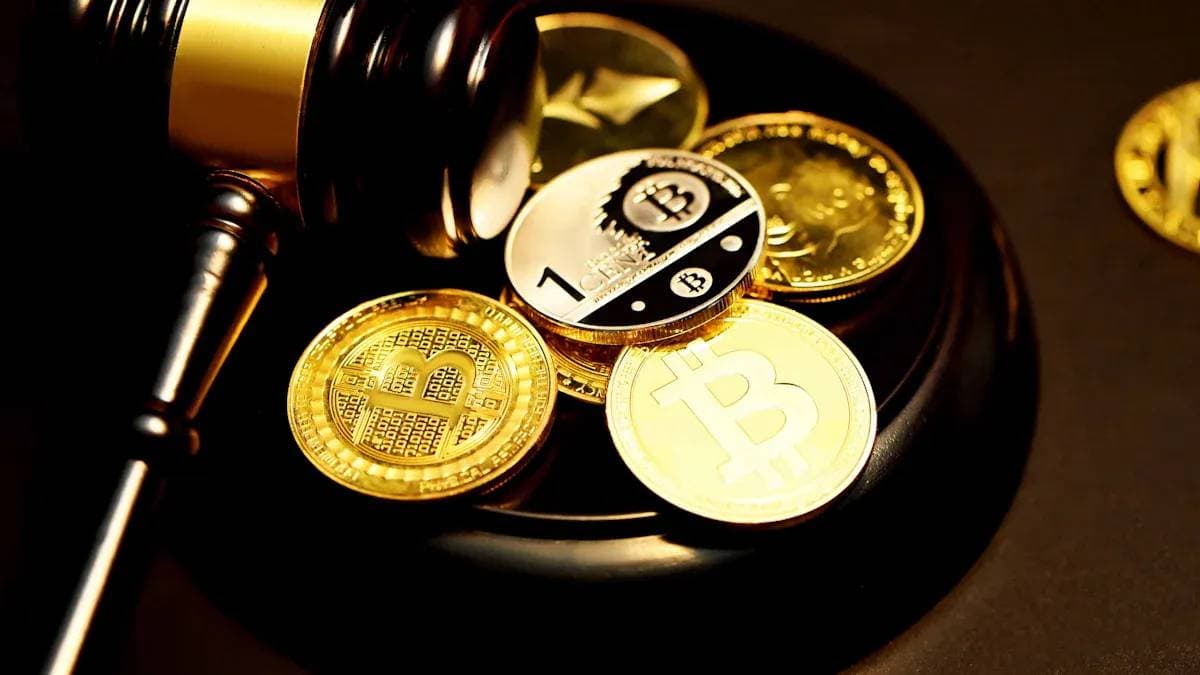- EasyCard
- Trade
- Help
- Announcement
- Academy
- SWIFT Code
- Iban Number
- Referral
- Customer Service
- Blog
- Creator
Is Cash App a Prepaid Card? How to Transfer Money Safely and Conveniently

Image Source: pexels
You might be wondering: Is Cash App a prepaid card? The answer is simple—it’s a mobile payment platform. Its functionality is far more complex than a prepaid card. Cash App provides a debit card called Cash Card and allows you to link certain prepaid cards as funding sources.
In the US, over half of people (64%) use P2P apps like Cash App. With 58 million monthly active users in 2025, understanding its proper use is crucial.
Key Points
- Cash App is a mobile payment platform, not a prepaid card. It offers a debit card and links to your bank account.
- Cash App account funds lack direct FDIC insurance. Activating the Cash Card may provide insurance.
- Cash App has diverse features, including sending/receiving payments, investing in stocks, trading Bitcoin, and saving.
- When using Cash App, always verify recipient information and enable security features to protect your funds.
- Beware of common scams like money-doubling and unexpected transfer frauds, and avoid clicking suspicious links.
Is Cash App a Prepaid Card?

Image Source: unsplash
To fully understand this question, you need to analyze Cash App from three core aspects: its account nature, funding sources, and feature scope. This clarifies its fundamental differences from traditional prepaid cards.
Account Nature: Payment Platform vs. Stored-Value Tool
First, Cash App is a peer-to-peer (P2P) payment app. P2P payments allow you to transfer funds directly from your bank account or digital wallet to another person’s account using digital technology, without relying on bank counters or checks for transfers with friends or family.
Your Cash App account is more like a digital wallet than a prepaid account. A digital wallet is a virtual account for online fund storage and convenient transfers. While you can store money in Cash App, its primary design isn’t for long-term savings like a bank account. The U.S. Consumer Financial Protection Bureau (CFPB) has noted that keeping funds in non-bank payment apps may carry higher risks than insured bank accounts.
Important Note: Your Fund Safety Traditional bank accounts are directly protected by the Federal Deposit Insurance Corporation (FDIC). Cash App account funds aren’t automatically insured. Only after activating the Cash Card (debit card) may your funds be insured through “pass-through” coverage. This means if Cash App faces financial issues, your funds may not be as secure as in a bank.
To clarify the differences, see the table below:
| Feature | Traditional Bank Account | Cash App Account |
|---|---|---|
| FDIC Insurance Method | Directly insured, up to $250,000 | Requires specific conditions for “pass-through” insurance |
| Insurance Conditions | Insured upon account opening | Funds may be insured only after activating Cash Card |
| Company Bankruptcy Risk | FDIC doesn’t protect bank failure | FDIC doesn’t protect Cash App failure |
| Fund Safety | Directly protected by FDIC | Safety depends on meeting insurance conditions |
So, when discussing Is Cash App a prepaid card, its account nature shows it’s a more complex payment platform, with security mechanisms distinct from bank accounts and prepaid cards.
Funding Sources: Bank Account vs. Prepaid Card
A hallmark of prepaid cards is the need to preload funds. Can you fund Cash App with a prepaid card?
The answer is: No.
Cash App doesn’t support adding funds from prepaid cards to its account. Your main funding sources are:
- Linked bank account
- Linked standard debit or credit card
A key distinction is the Cash Card provided by Cash App. This is a customizable debit card linked directly to your Cash App balance. When you use the Cash Card, funds are deducted from your Cash App account. It’s not a prepaid card requiring preloading.
Thus, in terms of fund flow, Cash App acts as a central hub connecting your bank account to payment activities, not an isolated stored-value tool.
Feature Scope: Comprehensive Finance vs. Single Payment
Prepaid cards typically have a single function: spending. You spend what you load. However, Cash App offers far more, another key distinction from prepaid cards.
Beyond basic sending and receiving, you can use Cash App to:
- Invest in U.S. stocks: Buy stocks with as little as $1, enabling commission-free investing.
- Trade Bitcoin: Offers an easy entry for Bitcoin transactions.
- Save: Set savings goals with automatic deposits.
- Free Tax Filing: Under certain conditions, file taxes for free via the platform.
These features make Cash App a lightweight comprehensive financial platform, integrating daily payments with investing and saving. When reconsidering Is Cash App a prepaid card, these robust functions clearly show it exceeds a prepaid card’s scope.
If you also need market data and FX checks, use BiyaPay’s Stock Info and Exchange Rate & Converter to gauge prices and conversion costs.
For cross-border needs, BiyaPay Remittance supports multi-currency exchange and delivery routes, with fees and ETA shown upfront—complementary to Cash App’s domestic use.
BiyaPay is a multi-asset wallet for payments, investing, and fund management, supporting fiat–digital conversions; see the homepage for coverage and compliance details.
How to Use Cash App Safely

Image Source: pexels
Having understood Cash App’s nature, the next step is learning to use it safely. While Cash App employs robust security technologies, your proactive precautions are equally critical. The platform protects your data and transactions with advanced methods, such as:
- Data Encryption: Your personal and payment data is encrypted during transmission and storage, meeting the highest Payment Card Industry standards (PCI-DSS Level 1).
- Fraud Detection: Uses artificial intelligence (AI) and machine learning to continuously monitor for suspicious activity, aiming to prevent fraud before it occurs.
Despite these measures, you must adopt these key safety habits to fortify your account.
Verify Recipient Information
This is the most basic and critical step. Before hitting “Send,” carefully verify the recipient’s $Cashtag, phone number, or email. Transfers are instant and nearly irreversible. If you send to the wrong person or a scammer, Cash App typically can’t force a refund.
Enable Account Security Lock
This is a must-enable feature. Through the “Security Lock”, you can require a PIN, Face ID, or fingerprint for each payment.
Operation Guide Go to your profile, navigate to “Privacy & Security,” and enable “Security Lock.” This simple setting prevents unauthorized transfers if your phone is unlocked.
Beware of Common Scams
Scammers are always looking for opportunities. According to U.S. Federal Trade Commission (FTC) reports, watch out for these common scams:
- Money-Doubling Scams: Scammers promise to double your money (e.g., send $50 to get $500). This is never real.
- Unexpected Transfer Scams: You receive an unexpected remittance, followed by a claim it was sent by mistake, asking for a return. The initial funds often come from stolen accounts; if you refund, the original fraudulent transaction is reversed, costing you money.
- “Claim Payment” Message Scams: You receive a text or email claiming a payment awaits, with a link. These lead to fake websites stealing login details.
Spotting Scam Signals Watch for red flags in suspicious messages: urgent wording (“Act now!”), spelling or grammar errors, or offers too good to be true.
Protect Your $Cashtag
Your $Cashtag is public by default, allowing anyone to send or request payments. To reduce harassment and risks, adjust privacy settings:
- Prevent Discovery via Contact Info: In “Privacy & Security,” disable “Allow others to find me via phone/email”.
- Make Profile Unsearchable: Disable profile discoverability to prevent strangers from finding your $Cashtag.
- Block Payment Requests: Turn off requests from everyone, allowing only contacts to send payment requests, filtering out strangers.
How to Use Cash App Conveniently
With safety mastered, you can confidently explore Cash App’s convenient features. Designed for simplicity, it makes transfers and payments quick, whether splitting dinner costs or shopping online.
Initiate Transfers Quickly
You can send money to anyone in a few simple steps, intuitive even for first-time users.
Operation Guide: How to Send Money
- Open Cash App and enter the amount.
- Tap “Pay.”
- Enter the recipient’s $Cashtag, phone number, or email.
- Add a brief note for the transfer purpose, e.g., “Dinner cost.”
- Tap “Pay” again to complete.
Cash App offers two transfer speeds. Standard transfers take 1-3 business days and are free. For instant delivery, choose instant transfer, incurring a 0.5% to 1.75% fee (minimum $0.25).
Set Up a Unique $Cashtag
Your `, making receiving payments easy. Share it, and others can send money without needing your phone or email.
You can customize a unique GoCash` is valid, but longer names aren’t.
Important Note Changing your $Cashtag invalidates all payment links tied to the old one. Share your new $Cashtag with friends promptly after changes.
Use the “Request Payment” Feature
When you need to collect money from friends or family, the “Request” feature is handy. Enter the amount and recipient’s info, and the system sends a payment request. This avoids awkward in-person requests, making collection polite and efficient. The recipient confirms with a tap to pay.
Master QR Code Payments
QR codes are another efficient payment method. Each Cash App user has a unique QR code. Find it via:
- Tap the profile icon in the top-right corner of the home screen.
- Click the QR code icon in the top-left corner.
- Your unique QR code appears, ready for others to scan.
Save the QR code for online payments or print it for a physical store. You can also scan others’ QR codes to pay quickly, especially useful for in-person transactions.
You now clearly understand the answer to Is Cash App a prepaid card? It’s a feature-rich payment platform, with its Cash Card as a debit card. While enjoying the convenience of $Cashtag and QR code payments, prioritize safety.
Safety First Always enable security lock features like PIN or biometric ID and stay alert for scams to secure your funds.
With this knowledge, you can become a savvy and secure Cash App user.
FAQ
Is Cash App free?
Core operations like sending, receiving, and standard transfers are free. However, fees apply for certain services:
- Credit Card Payments: 3% handling fee.
- Instant Transfers: 0.5% to 1.75% fee.
Can I use Cash App outside the US?
Currently, Cash App is available only in the US and UK. You can make cross-border payments between these countries, but transfer functions are unavailable elsewhere. Plan your funds before traveling abroad.
What if I send money to the wrong person?
Transfers are instant and usually irreversible. Use the app’s “Request Refund” feature to contact the recipient immediately. If they don’t refund, Cash App can’t force recovery. Verify details carefully before sending.
*This article is provided for general information purposes and does not constitute legal, tax or other professional advice from BiyaPay or its subsidiaries and its affiliates, and it is not intended as a substitute for obtaining advice from a financial advisor or any other professional.
We make no representations, warranties or warranties, express or implied, as to the accuracy, completeness or timeliness of the contents of this publication.




Contact Us
Company and Team
BiyaPay Products
Customer Services
BIYA GLOBAL LLC is a licensed entity registered with the U.S. Securities and Exchange Commission (SEC No.: 802-127417); a certified member of the Financial Industry Regulatory Authority (FINRA) (Central Registration Depository CRD No.: 325027); regulated by the Financial Industry Regulatory Authority (FINRA) and the U.S. Securities and Exchange Commission (SEC).
BIYA GLOBAL LLC is registered with the Financial Crimes Enforcement Network (FinCEN), an agency under the U.S. Department of the Treasury, as a Money Services Business (MSB), with registration number 31000218637349, and regulated by the Financial Crimes Enforcement Network (FinCEN).
BIYA GLOBAL LIMITED is a registered Financial Service Provider (FSP) in New Zealand, with registration number FSP1007221, and is also a registered member of the Financial Services Complaints Limited (FSCL), an independent dispute resolution scheme in New Zealand.




















